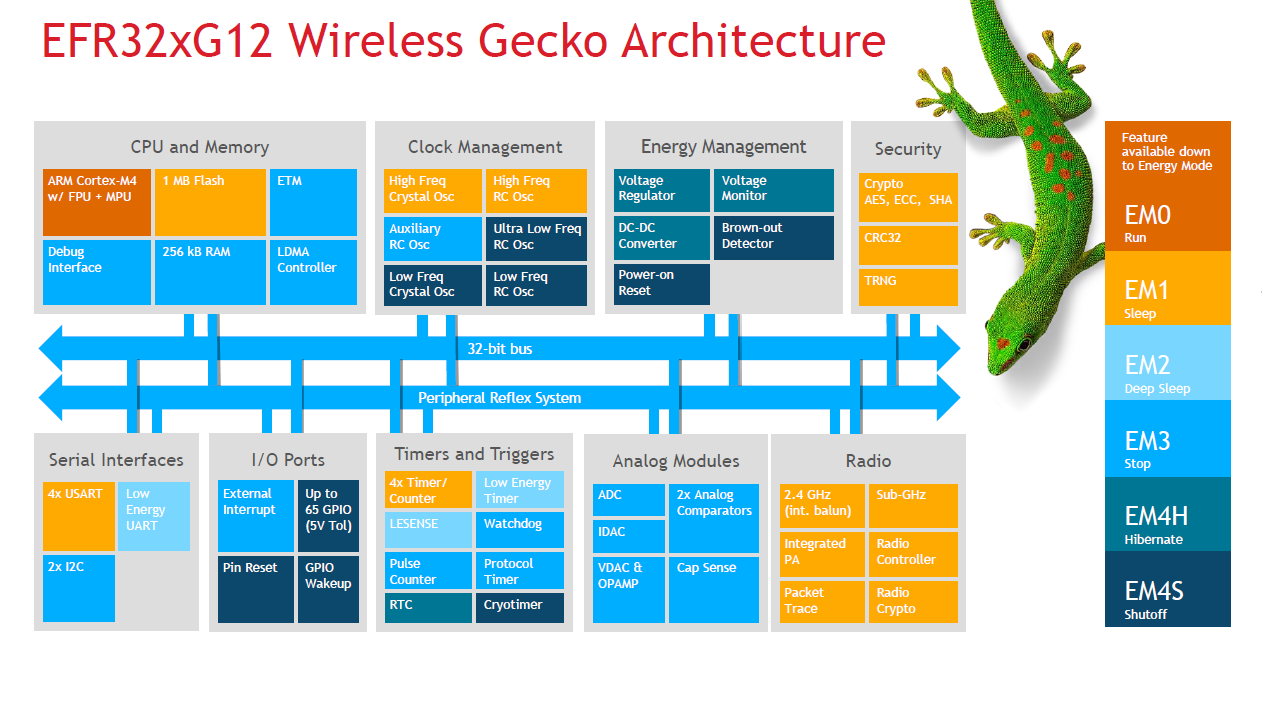By Richard Quinnell
Developers creating a wireless device for the Internet of Things (IoT) face a bewildering array of choices for the radio protocol to use. Bluetooth, Thread, ZigBee, Wi-Fi, and proprietary systems are all vying for a share of the IoT market, and choosing which to support in a product design can seem fraught with risk. There may be a simpler answer, though; choose several at once.
Silicon Laboratories has introduced a host of wireless SoCs — microcontrollers with built-in radios — that take some of the worry out of choosing which protocol to support. The EFR32x12 families are all configurable to support several different wireless configurations so that such decisions can be delayed or even altered as market and application requirements demand. The multiprotocol support also allows the SoCs to support product lines that offer variations, without increasing manufacturing inventory requirements. A single design can target multiple markets or adjust to meet changing market demands for the protocol it needs to support.
Software in the SoCs handles all the elements of the radio protocol, including protocol stacks, modulation schemes, and RF signal generation. The radio output power can be as great as +19 dBm and receiver sensitivity as low as -102.7 dBm for Thread and ZigBee, -95 dBm for Bluetooth Low Energy. The SoCs also provide substantial resources for the user's application program. Compared to the company's prior generation of Gecko wireless products, the EFR32x12 devices offer as much as 4x Flash and 8x RAM to support more complex applications, as much as 40% reduction in sleep current to extend battery lifetime, and more on-board peripherals.

The EFR32FG12 Flex Gecko family supports proprietary 2.4 GHz and sub-GHz communications schemes. The EFR32BG12 Blue Gecko family adds Bluetooth 5.0 support to the proprietary protocols. The ERF32MG12 does it all, supporting 2.4 GHz Thread, ZigBee, Bluetooth, and proprietary protocols as well as sub-GHz. All the devices are capable of changing modes as needed, so that a design can be field configured to work with whatever system is in place, changing operating modes to address different purposes during operation. A home automation device design could boot up in Bluetooth mode, for instance, to interact with a user's smartphone for setup and configuration, then switch to ZigBee or Thread mode as needed to be compatible with the home automation network.
This switching ability is also due to be upgraded, according to Silicon Labs' senior director of product marketing, Tom Pannell. In an interview with Electronic Products Pannell noted that the company is testing beta software now that allows dynamic switching between modes. Dynamic switching would allow a device to time-slice its radio's configuration and alternately work with different radio protocols. A device might normally operate within a ZigBee network, for instance, but periodically switch to Bluetooth to send out a beacon message and then switch back. Pannell expects the software to support dynamic switching to become available for the product family sometime in Q3 this year.
To support developers seeking to use these products, Silicon Labs offers the Simplicity Studio IDE with energy profiler and hardware configurator, and wireless starter kits with interchangeable radio boards.
Advertisement
Learn more about Electronic Products Magazine





